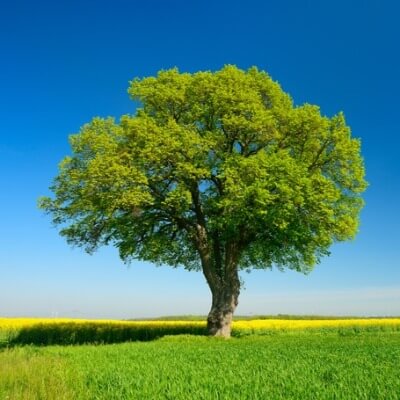
- Plant Name: Tree
- Type of Plant: Perennial plant
- Plant Parts: Roots, trunk, leaves, buds and seeds
- Total Species: Between 60,000 and 100,000
- Population: 3+ trillion
- Distribution: Worldwide (except Antartica)
- Oldest Fossil Date: 365 million years old (Wattieza)
23 Tree Facts for Kids
- A tree is a plant that has a long trunk (stem), with branches and leaves extending from the trunk.
- There is no official taxonomic group for trees. The word tree is used to describe many different plant species that meet a few specific physical characteristics.
- Based on fossil evidence, trees have been on our planet for at least the last 370 million years.
- Trees are a perennial plant, which means they can live for more than two years.
- Some species of plants that are considered trees can live for several thousand years.
- There are several parts that make up a tree.
- The main parts of a tree include roots, trunk, branches and leaves.
- The roots of a tree are underground. They help support the tree and feed it nutrients, like water.
- The trunk of the tree starts at the ground and rises upward. The trunk transport nutrients from the roots to the rest of the tree. It also helps the branches and leaves overtop other plants and get as much sunlight as possible.
- The branches extend out from the trunk in all directions. Leaves and stems grow from the branches, with the evolutionary goal of covering as much area as possible that contains sunlight.
- The leaves are used to create energy from sunlight, a process known as photosynthesis.
- Trees reproduce through pollination via insects, wind and animals.
- Trees produce seeds that can grow into a separate adult tree if the conditions are right.
- Trees can disperse seeds using several different methods. Winged and plumed seeds are dispersed using wind. Edible fruits contain seeds that get dispersed by animals. Some seeds simply fall to the ground via gravity.
- Trees are the primary source of lumber used by humans to build things, like a home or wooden boat. Trees are also used to create decorative art and furniture, like a table or statue.
- The wood for trees can also be used as fuel for a fire, both for warmth and cooking.
- Trees are also the source of food, like fruit and nuts. The sap from some trees is used to create syrups.
- Several popular species of trees include the red maple tree, the oak tree, the magnolia tree, the sugar maple tree, the sweetgum tree, the cherry blossom tree, the palm tree, the sequoia tree, the dogwood tree and the pine tree.
- Prometheus, a Great Basin bristlecone pine (Pinus longaeva) was found in Wheeler Park in Nevada, USA, North America, was estimated to be over 4,800 yeares old. Sadly, Prometheus was cut down in 1964 by American professor of geography Donald Rusk Currey.
- Hyperion, a coast redwood (Sequoia sempervirens) tree found in the Redwood National and State Parks in California, USA, North America is the world’s tallest tree with a height of 380.1 feet.
- General Sherman, a giant sequoia (Sequoiadendron giganteum) tree found in Sequoia National Park in California, USA, North America is the world’s biggest tree, by volume, at 52,500 cubic feet.
- El Árbol del Tule, a Montezuma cypress (Taxodium mucronatum) tree found in the Mexican state of Oaxaca in Mexcio, North America is the stoutest tree in the world with a diameter of 30.8 feet.
- Thimmamma Marrimanu, a Banyan (Ficus benghalensis) tree found in Anantapur in Andhra Pradesh, India, Asia is the broadest tree in the world with a crown of 590.5 feet.
Pictures of Trees
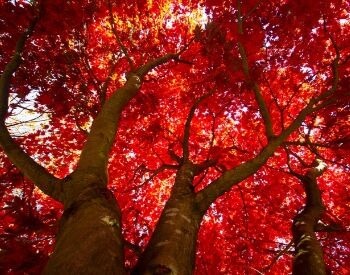
A picture of a red maple tree in the summer.
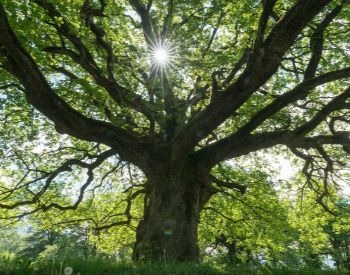
A picture of a large oak tree in the summer.
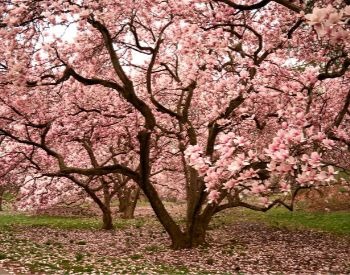
A picture of a magnolia tree in the summer.
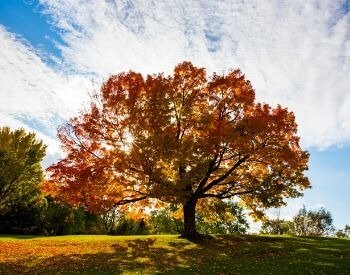
A picture of a sugar maple (autumn).
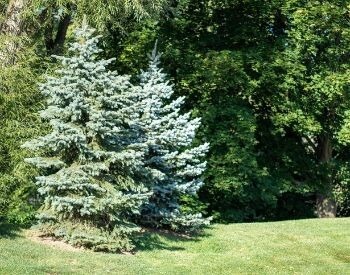
A picture of a pine tree in the summer.

A picture of a dogwood tree in the summer.
Find More Facts About Trees
- 50 Tree Species – Discover 50 different tree species and information about each species on the Cornell University website.
- Benefits of trees – Learn about the benefit of trees and how humans harm them on the U.S. Forest Service website.
- Tree – Britannica – Explore the Britannica website to discover more about trees.
- Tree – Wikipedia – Read more about trees and related plant topics on the Wikipedia website.
